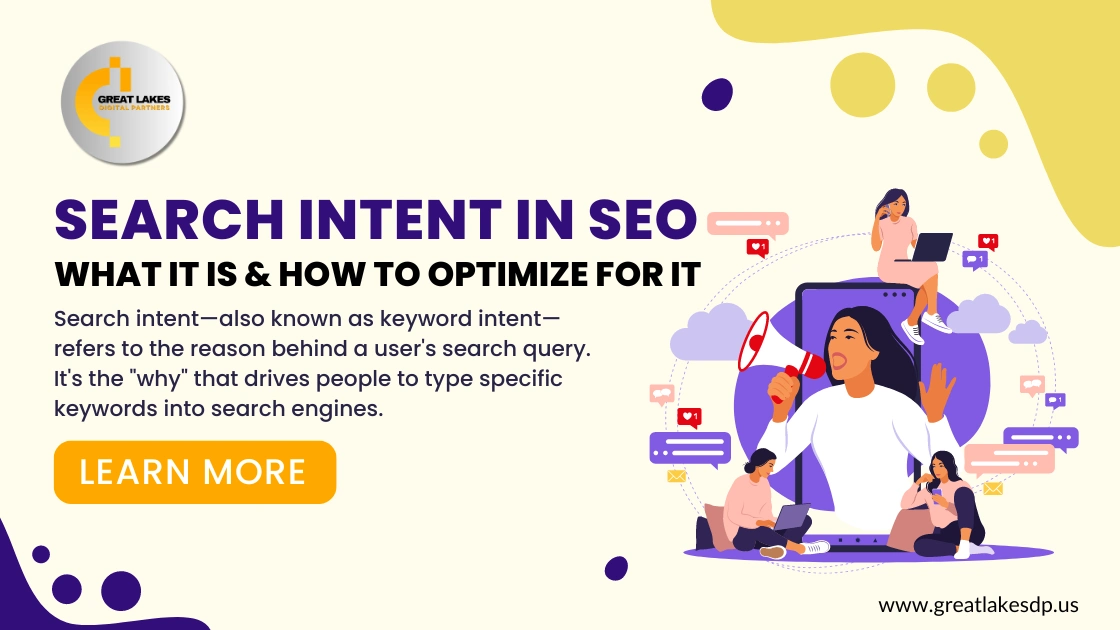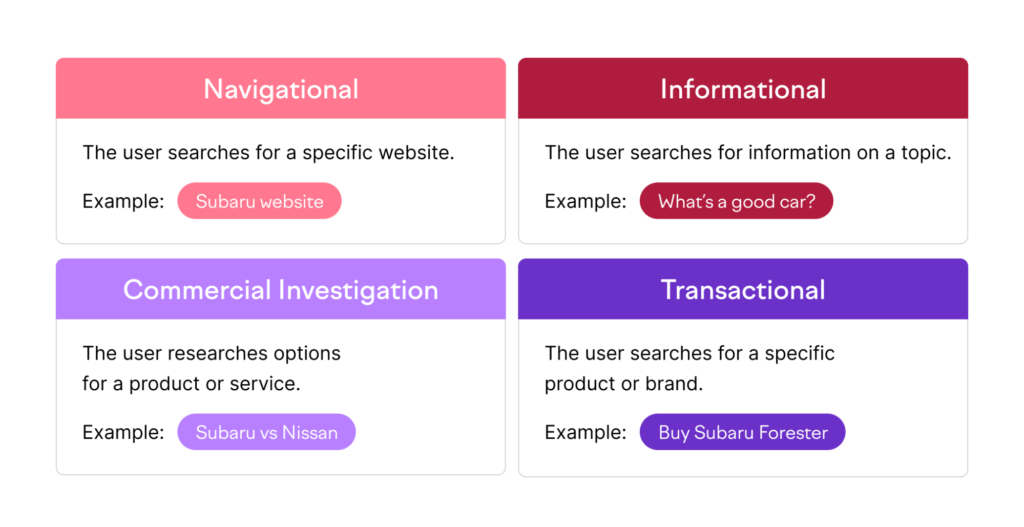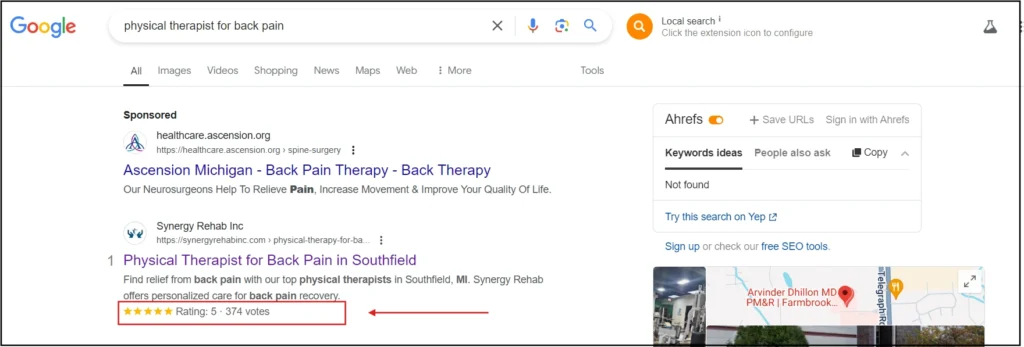
In 2024, understanding search intent has become more crucial than ever for SEO success. As Google’s algorithms evolve, they increasingly prioritize content that matches the user’s search intent. But what exactly is search intent, and how can you optimize your content to meet it?
This guide dives deep into these questions, offering actionable insights to help you master search intent and get the ranking your website deserves.
What is Search Intent?
Search intent—also known as keyword intent—refers to the reason behind a user’s search query. It’s the “why” that drives people to type specific keywords into search engines. When you understand search intent, you can create content that directly addresses the user’s needs, which is key to improving your site’s visibility and engagement.
There are four primary types of search intent:

Image Credit: Semrush
- Informational Intent: Users are looking for information or answers to specific questions. Examples include searches like “how to optimize for search intent” or “what is keyword intent.”
- Navigational Intent: Users are trying to find a specific website or page. For instance, someone searching for “Great Lakes digital marketing agency” likely wants to navigate directly to that company’s site.
- Transactional Intent: Users are ready to make a purchase and are searching for products or services. For example, a query like “buy SEO tools” falls under transactional intent.
- Commercial Investigation: Users are researching products or services but aren’t quite ready to buy. A search like “best digital marketing agency in Michigan” indicates this type of intent.
Why is Search Intent Important in SEO?
Google’s algorithms are designed to understand and prioritize content that aligns with the user’s search intent. If your content matches the keyword intent behind a search query, it’s more likely to rank higher in search results, drive organic traffic, and convert visitors into customers.
In fact, recent studies show that pages optimized for search intent have a 67% higher chance of ranking on the first page of Google. This statistic alone highlights the importance of tailoring your content to meet keyword intent.
How to Optimize Your Content for Search Intent
1. Identify the Intent Behind Your Target Keywords
Before you can optimize for search intent, you need to understand the intent behind the keywords you’re targeting. Use tools like Google Analytics, SEMrush, or Ahrefs to analyze what users are searching for and the type of content that currently ranks for those keywords.
2. Create Content That Aligns with Search Intent
Once you’ve identified the intent, create content that satisfies it. For informational intent, focus on providing comprehensive answers and in-depth guides. For transactional intent, prioritize product pages with clear CTAs. If the intent is commercial investigation, create comparison guides or reviews that help users make informed decisions.
3. Optimize Your Meta Tags and Headlines
Your meta tags and headlines should clearly reflect the search intent. For example, if you’re targeting the keyword “Digital marketing agency in Michigan” with transactional intent, your headline could be “Hire the Best Digital Marketing Agency in Michigan for Your Business.”
4. Use Structured Data and Rich Snippets

Structured data helps search engines understand the content of your page, making it easier to match it with the correct search intent. Implementing rich snippets, like FAQs or product ratings, can enhance your visibility and click-through rates by providing users with quick answers or additional information directly in the search results.
5. Continuously Monitor and Adjust Your Strategy
Search intent can change over time as new trends and user behaviors emerge. Regularly monitor your content’s performance and adjust your strategy accordingly. Use tools like Google Search Console to track which queries bring traffic to your site and whether they match the intended search intent.
Let’s Summarize – What is Search Intent in SEO?
Search intent in SEO refers to the purpose behind a user’s search query. It is also known as keyword intent. Understanding search intent allows you to create content that directly addresses what users are looking for, improving your chances of ranking higher on search engines.
Types of Search Intent:
- Informational: Users seeking information or answers.
- Navigational: Users looking for a specific website or page.
- Transactional: Users ready to make a purchase.
- Commercial Investigation: Users researching products or services before buying.
Optimizing your content to align with these intents can lead to better visibility, higher engagement, and more conversions.
At Great Lakes DP, as the best digital marketing agency in Michigan, we specialize in helping businesses optimize their content for search intent. Our expert team can help you craft content that not only ranks but also captures these top positions in search results. Reach out to us today to learn how we can elevate your digital marketing strategy and drive more qualified traffic to your site.
FAQs on Search Intent in SEO
1. What exactly does search intent mean in SEO, and why is it significant?
Search intent, often referred to as keyword intent, represents the underlying goal or motivation a user has when entering a query into a search engine. It’s the driving force behind what users are looking to achieve—whether it’s finding information, purchasing a product, or navigating to a specific website. In SEO, understanding search intent is vital because it allows you to align your content with what users genuinely want. By matching your content to their intent, you enhance the chances of your pages ranking higher, attracting more relevant traffic, and ultimately satisfying user needs, which can lead to better user engagement and higher conversion rates.
2. What are some advanced methods to determine search intent for specific keywords?
Beyond basic keyword research tools, determining search intent can involve several advanced methods. One effective approach is to analyze the content that currently ranks for your target keywords. Look at the format, tone, and type of content (e.g., blog posts, product pages, videos) that dominate the search results—this gives clues about the intent. Additionally, tools like Google Search Console can reveal which queries bring traffic to your site and how users interact with your content afterward. Heatmaps and session recordings can also provide insights into how users engage with specific pages, helping you refine your understanding of their intent.
3. How does optimizing for search intent influence your website’s overall SEO strategy?
Optimizing for search intent can significantly enhance your website’s SEO strategy by making it more user-centric. When your content matches user intent, you’re not just improving your chances of ranking well—you’re also creating a more positive user experience. This approach can reduce bounce rates, increase dwell time, and boost engagement metrics, all of which are signals to search engines that your site is valuable and relevant. Furthermore, aligning with search intent often leads to higher conversion rates, as users find exactly what they need, making them more likely to take action on your site.
4. How can you stay updated with evolving search intent trends and adapt your content strategy accordingly?
Search intent isn’t static; it evolves as user behavior and search algorithms change. To stay ahead, it’s crucial to regularly revisit your keyword research and analyze current trends. Tools like Google Trends can help identify shifts in what users are searching for and how they phrase their queries. Additionally, keeping an eye on your competitors and industry news can provide insights into emerging trends. Regularly updating your content based on these insights ensures that your site remains relevant and continues to meet user expectations. This iterative approach is key to maintaining and improving your search engine rankings over time.
5. How should search intent guide your keyword selection process, especially for long-tail keywords?
Search intent should be the foundation of your keyword selection process, particularly when targeting long-tail keywords, which are more specific and often indicate a clear intent. When choosing keywords, start by identifying the intent behind them—whether it’s informational, navigational, transactional, or commercial investigation. For example, a long-tail keyword like “best eco-friendly products for home use” indicates a commercial investigation intent, meaning the user is researching options before making a purchase. By understanding this, you can create content that not only targets these keywords but also guides users through the buying decision process, addressing their specific concerns and questions.
